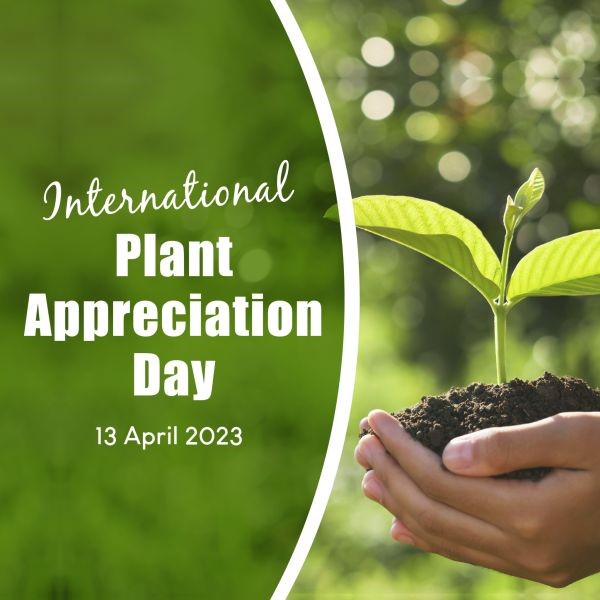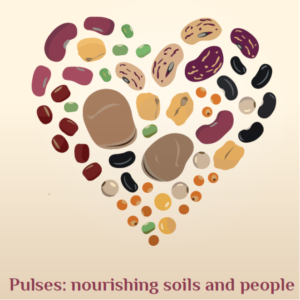Dokumentimi & Informimi
Dokumentimi i mirë i resurseve gjenetike bimore është pjesë e domosdoshme për ta bërë diversitetin gjenetik të përdorshëm nga fermerët, seleksionerët dhe kërkuesit. Para se të përdorim resurset gjenetike të koleksionuara, ne duhet t’i njohim ato, të dimë se çfarë materialesh bimore kemi, cilat janë karakteristikat dhe vlerat e përdorimit të tyre. Dokumentimi i mirë i resurseve gjenetike bimore kërkohet për ruajtjen, menaxhimin dhe përdorimin e qëndrueshëm të biodiversitetit.
Tipet e dokumentimit: Dokumentimi i kujdesshëm është qendër e ruajtjes efektive dhe përdorimit të qëndrueshëm të resurseve gjenetike të bimëve. Për informacionin ka rëndësi burimi i dokumentimit dhe sistemi i informimit. Banka gjenetike përdor strukturën e mëposhtëme të dokumentimit: Protokollet & Standarded, Listën e deskriptorve (Të dhënat e pasaportës, të dhënat e karakterizimit dhe vlerësimit), Databazë dhe Sistemin i informimit.
2017_Documentation of Plant genetic Resources
Dokumentimi i diversitetit të koleksioneve të bimëve fillon me regjistrimin e të dhënave të rëndësishme (të dhëna të pasaportës) në kohën kur shkencëtarët koleksionojnë për herë të parë materialin. Këto të dhëna të quajtura ‘’të dhëna të pasaportës’’ përfshijnë informacion bazë se ku, kur dhe çfarë është koleksionuar. Lista e deskriptorëve siguron një gjuhë standarte për regjistrimin e këtij informacioni.
Çdo mostër që hyn në Bankën Gjenetike duhet të të shoqërohet me informacion të mjaftueshëm të pasaportës, përfshirë një numër identifikimi unik, emërtimin shkencor, emërtimin e zakonshëm, datën e pranimit, pikën e koleksionimit etj. për tu siguruar që mostra është e dokumentuar si duhet. Mostrat e konservuara në Bankën Gjenetike janë përshkruar sipas FAO/Bioversity Deskriptorët e pasaportës për shumë specie, V.2, publikuar në 2012.
Të gjithë këto të dhëna, në Bankën gjenetike, duhet të jenë lehtësisht të aksesueshme, të kuptueshme, të ruajtura sakstësisht në database të kompjuterit dhe të përfshira në sistemin e menaxhimit të bankës gjenetike. Në bankën gjenetike Shqiptare kjo është veçanërisht e rëndësishme për planifikimin e misioneve të ardhshme të koleksionimit, për përcaktimin e boshllëqeve të koleksionimit dhe në identifikimin e dublikatave në koleksione.
Passport descriptors
(General information to an accession)
FAO/IPGRI Multi-Crop Passport Descriptors list (EURISCO Descriptors
Institute code (INSTCODE)
Code of the institute where the accession is maintained. The codes consist of the 3-letter ISO 3166 country code of the country where the institute is located plus a number. The current set of Institute Codes is available from the FAO website http://apps3.fao.org/wiews/.
Accession number (ACCENUMB)
This number serves as a unique identifier for accessions within a genebank collection, and is assigned when a sample is entered into the genebank collection.
Collecting number (COLLNUMB)
Original number assigned by the collector(s) of the sample, normally composed of the name or initials of the collector(s) followed by a number. This number is essential for identifying duplicates held in different collections.
Collecting institute code (COLLCODE)
Code of the Institute collecting the sample. If the holding institute has collected the material, the collecting institute code (COLLCODE) should be the same as the holding institute code (INSTCODE). Follows INSTCODE standard.
Genus (GENUS)
Genus name for taxon, in latin. Initial uppercase letter required.
Species (SPECIES)
Specific epithet portion of the scientific name, in latin, in lowercase letters. Following abbreviation is allowed: ‘sp.’
Species authority (SPAUTHOR)
The authority for the species name.
Subtaxa (SUBTAXA)
Subtaxa can be used to store any additional taxonomic identifier, in latin. Following abbreviations are allowed: ‘subsp.’ (for subspecies); ‘convar.’ (for convariety); ‘var.’ (for variety); ‘f.’ (for form).
Subtaxa authority (SUBTAUTHOR)
The subtaxa authority at the most detailed taxonomic level.
Forma (FORMA)
Botanical forma (e.g. ‘aestatis’)
Familia (FAMILIA)
Botanical family (e.g. ‘Leguminosae (Fabaceae)’ )
Common crop name (CROPNAME)
Name of the crop in colloquial language, preferably English (e.g. ‘malting barley’, ‘cauliflower’)
Accession name (ACCENAME)
Either a registered or other formal designation given to the accession. First letter uppercase. Multiple names separated with semicolon without space. (e.g.: Rheinische Vorgebirgstrauben;Emma;Avlon)
Acquisition date (ACQDATE)
Date on which the accession entered the collection where YYYY is the year, MM is the month and DD is the day. Missing data (MM or DD) should be indicated with hyphens. Leading zeros are required. (e.g.: 1968—-;20020620)
Country of origin (ORIGCTY)
Code of the country in which the sample was originally collected. Use the 3-letter ISO 3166-1 extended country codes.
Location of collecting site (COLLSITE)
Location information below the country level that describes where the accession was collected. This might include the distance in kilometers and direction from the nearest town, village or map grid reference point, (e.g. 7 km south of Curitiba in the state of Parana).
Latitude of collecting site (LATITUDE)
Degree (2 digits) minutes (2 digits), and seconds (2 digits) followed by N (North) or S (South) (e.g. 103020S). Every missing digit (minutes or seconds) should be indicated with a hyphen. Leading zeros are required (e.g. 10—-S; 011530N; 4531–S).
Longitude of collecting site (LONGITUDE)
Degree (3 digits), minutes (2 digits), and seconds (2 digits) followed by E (East) or W (West) (e.g. 0762510W). Every missing digit (minutes or seconds) should be indicated with a hyphen. Leading zeros are required (e.g. 076—-W).
Elevation of collecting site (ELEVATION)
Elevation of collecting site expressed in meters above sea level. Negative values are allowed.
Collecting date of sample (COLLDATE)
Collecting date of the sample as YYYYMMDD. Missing data (MM or DD) should be indicated with hyphens. Leading zeros are required.
Breeding institute code (BREDCODE)
FAO Institute code of the institute that has bred the material.
Biological status of accession (SAMPSTAT)
The coding scheme proposed can be used at 3 different levels of detail: either by using the general codes (in boldface) such as 100, 200, 300, 400 or by using the more specific codes such as 110, 120 etc.
100) Wild
110) Natural
120) Semi-natural/wild
200) Weedy
300) Traditional cultivar/landrace
400) Breeding/research material
410) Breeder’s line
411) Synthetic population
412) Hybrid
413) Founder stock/base population
414) Inbred line (parent of hybrid cultivar)
415) Segregation population
500) Advanced/improved cultivar
999) Other (Elaborate in REMARKS field)
Ancestral data (ANCEST)
Information about either pedigree or other description of ancestral information (i.e. parent variety in case of mutant or selection). For example a pedigree ‘Hanna/7*Atlas//Turk/8*Atlas’ or a description ‘mutation found in Hanna’, ‘selection from Irene’ or ‘cross involving amongst others Hanna and Irene’.
Collecting/acquisition source (COLLSRC)
The coding scheme proposed can be used at 2 different levels of detail: either by using the general codes (in boldface) such as 10, 20, 30, 40 or by using the more specific codes such as 11, 12 etc.
10) Wild habitat
11) Forest/woodland
12) Shrubland
13) Grassland
15) Aquatic habitat
20) Farm or cultivated habitat
21) Field
22) Orchard
23) Backyard, kitchen or home garden (urban, peri-urban or rural)
24) Fallow land
25) Pasture
26) Farm store
27) Threshing floor
28) Park
30) Market or shop
40) Institute, Experimental station, Research organization, Genebank
50) Seed company
60) Weedy, disturbed or ruderal habitat
61) Roadside
62) Field margin
99) Other (Elaborate in REMARKS field)
Donor institute code (DONORCODE)
FAO Institute Code for the donor institute.
Donor accession number (DONORNUMB)
Number assigned to an accession by the donor.
Other identification (numbers) associated with the accession (OTHERNUMB)
Any other identification (numbers) known to exist in other collections for this accession. Use the following system: INSTCODE:ACCENUMB;INSTCODE:ACCENUMB;… INSTCODE and ACCENUMB follow the standard described above and are separated by a colon. Pairs of INSTCODE and ACCENUMB are separated by a semicolon without space. When the institute is not known, the number should be preceded by a colon.
Location of safety duplicates (DUPLSITE)
FAO Institute Code of the institute where a safety duplicate of the accession is maintained. The code consist of the 3-letter ISO 3166 country code of the country where the institute is located plus a number.
Type of germplasm storage (STORAGE)
If germplasm is maintained under different types of storage, multiple choices are allowed, separated by a semicolon (e.g. 20;30). (Refer to FAO/IPGRI Genebank Standards 1994 for details on storage type.)
10) Seed collection
11) Short term
12) Medium term
13) Long term
20) Field collection
30) In vitro collection (Slow growth)
40) Cryopreserved collection
99) Other (elaborate in REMARKS field)
Remarks (REMARKS)
The remarks field is used to add notes or to elaborate on descriptors with value 99 or 999 (=Other). Prefix remarks with the field name they refer to and a colon . Separate remarks referring to different fields are separated by semicolons without space. (e.g. COLLSRC:roadside)
Decoded collecting institute (COLLDESCR)
Brief name and location of the collecting institute. Only to be used if COLLCODE can not be used since the FAO Institution Code for this institute is not (yet) available. (e.g. Tuinartikelen Jan van Zomeren, Arnhem, The Netherlands)
Decoded breeding institute (BREDDESCR)
Brief name and location of the breeding institute. Only to be used if BREDCODE can not be used since the FAO Institution Code for this institute is not (yet) available. (e.g. CFFR rom Chile)
Decoded donor institute (DONORDESCR)
Brief name and location of the donor institute. Only to be used if DONORCODE can not be used since the FAO Institution Code for this institute is not (yet) available. (e.g. Nelly Goodward, Groningen; The Netherlands)
Decoded safety duplication location (DUPLDESCR)
Brief name and location of the institute maintaining the safety duplicate. Only to be used if DUPLSITE can not be used since the FAO Institution Code for this institute is not (yet) available. (e.g. Pakhoed Freezers Inc., Paramaribo, Surinam)
Accession URL (ACCEURL)
URL linking to additional data about the accession either in the holding genebank or from another source. (e.g. www.cgn.wageningen-ur.nl/pgr/collections/passdata.asp?accenumb=CGN04848)
Multilateral System Status (MLSSTAT)
Information if Genus/Species is mentioned in Annex 1 of the International Treaty. (Yes = 1, No = 0)


